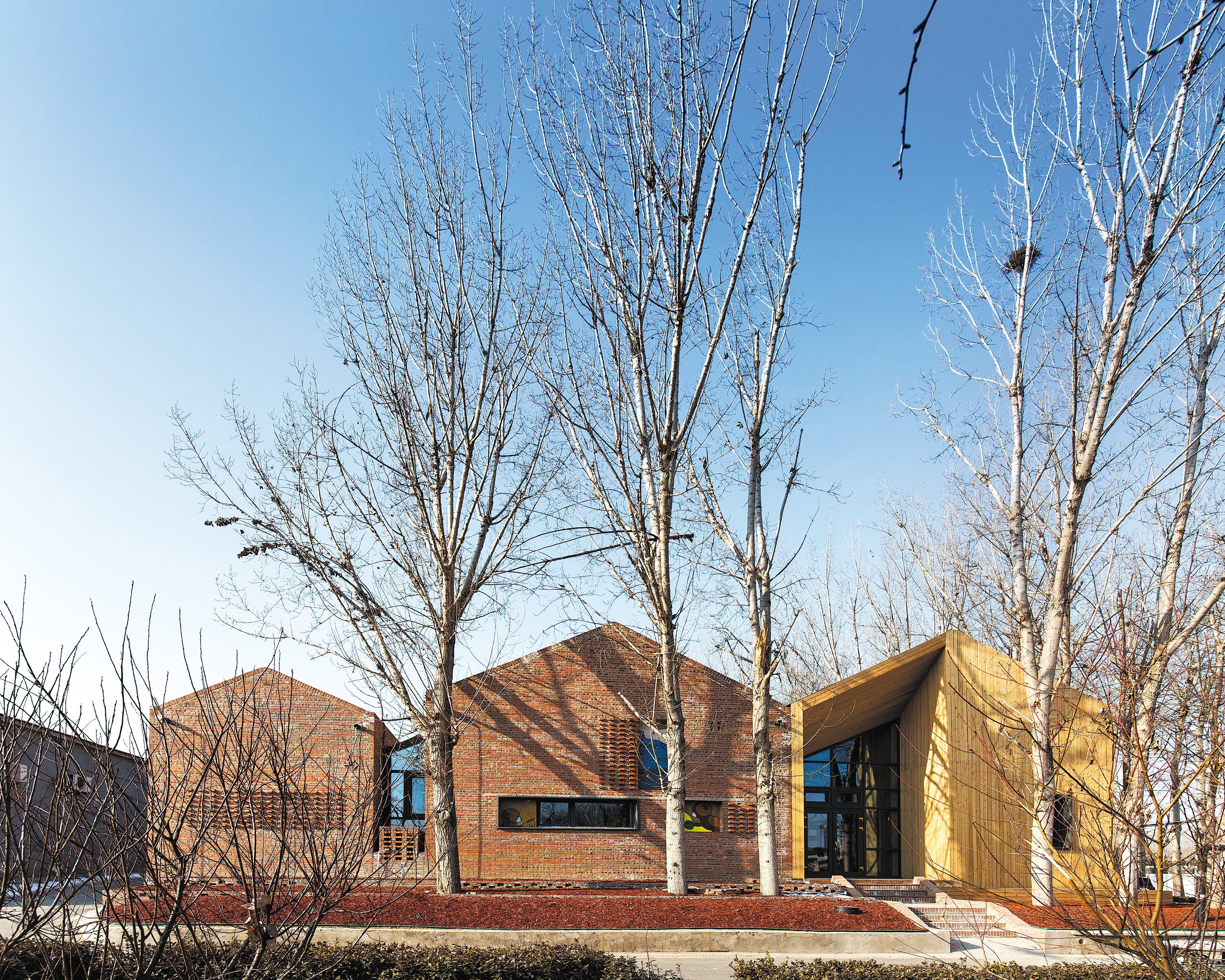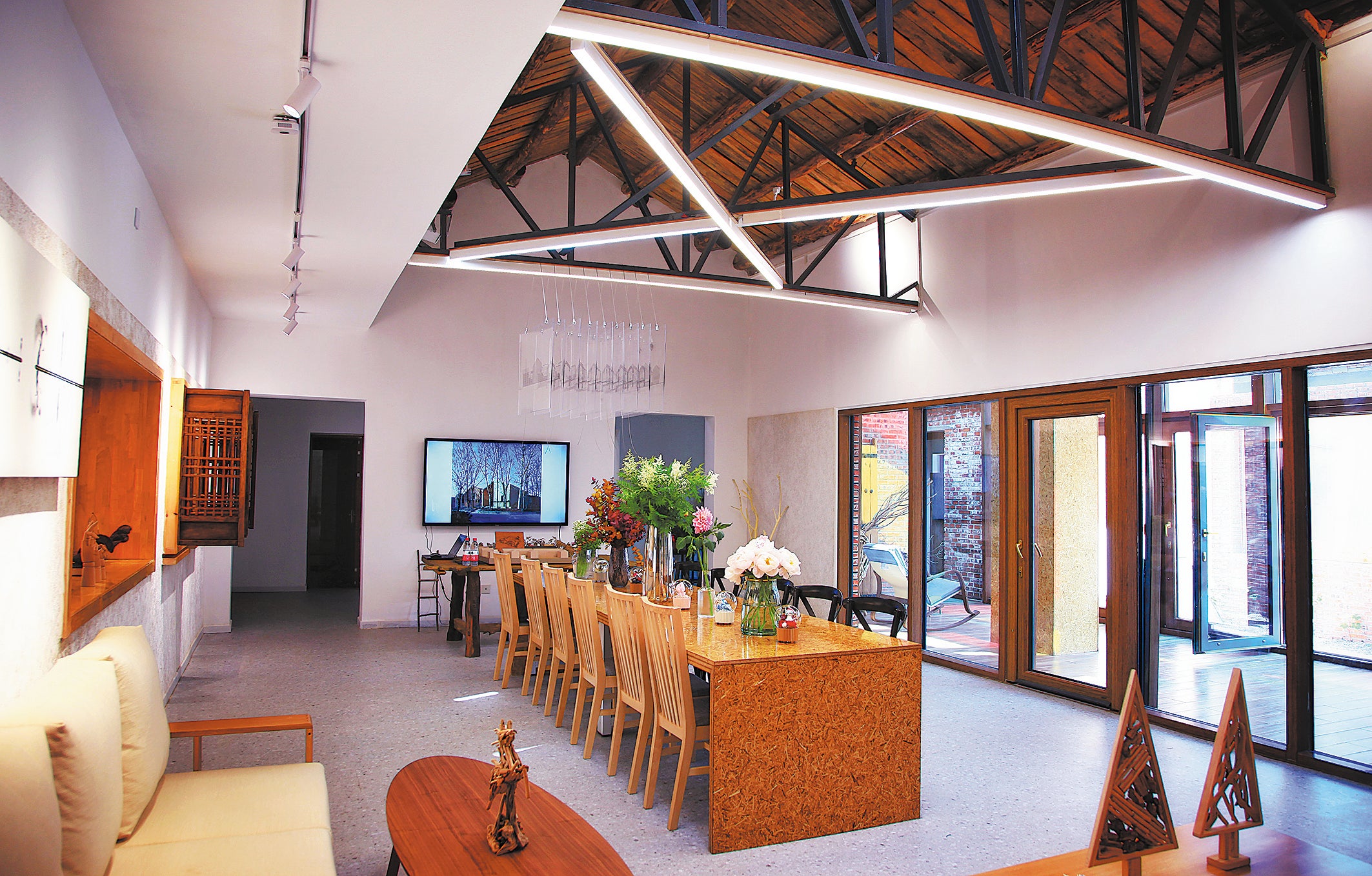Green homes offer hope amid climate change
THE ARTICLES ON THESE PAGES ARE PRODUCED BY CHINA DAILY, WHICH TAKES SOLE RESPONSIBILITY FOR THE CONTENTS

Architects often spend months or even years perfecting a design to express their ideas more clearly, convey additional information, or outline the right proportions for a building.
However, the urgent issue of climate change is placing new demands on their work. A report released by the United Nations Environment Programme in September said the construction sector is by far the largest emitter of greenhouse gases — being responsible for at least 37 per cent of such emissions globally.
In China, the construction sector accounted for nearly 51 per cent of carbon emissions nationwide, an industry report by the China Association of Building Energy Efficiency stated in 2021.
Ren Jun, a professor at Tianjin University’s School of Architecture, said carbon emissions in the building industry contribute some 50 per cent of the 9.8 billion long tonnes of such emissions in China each year.
Ren designed the first near-zero energy house in China in December 2019. The house, situated in Banbidian village in Beijing’s Daxing district, won the International Design Award in the United States in January last year. It has been rented from local villagers.
The 4,300-sq-ft property runs on solar power gathered from rooftop panels, with the addition of a small amount of power from the grid.
Ren said the first obstacle to conserving energy in the property was heat retention, which he attempted to achieve by keeping the indoor temperature at a certain level. The property is divided into five areas: a “solar garden” in the front yard, a central lounge, a water courtyard, a sponge zone, and a back room. For the exterior walls, Ren used three types of insulation, including plastic foam, each about 9.8 inches thick. Even the ground floor was dug up and filled with insulation materials, Ren said.
Ren looked to passive house windows, which effectively retain heat. Passive houses are energy-efficient buildings that meet requirements laid out by the Passive House Institute. Originating in Germany during the 1990s, the passive house movement has become an influential benchmark for energy saving and reduced carbon footprints.
Designing a building that consumes little energy is no easy task. Sophisticated technology and careful construction are required, but the costs of materials and maintenance are high.
The near-zero energy house designed by Ren features red bricks on the exterior, coupled with a separate side room built from wood. The temperature in this room is maintained at 20 C all year round, even in the harsh winters of northern China.

This is possible due to the structure of the entire property, which boasts three thick layers of insulation, a windproof roof, and insulated foundations. The skylight on the roof of the central lounge provides interior lighting and ventilation, as well as thermal storage in addition to that provided by the thickened exterior walls and passive windows, which also help retain heat. Photovoltaic tiles mounted on the roof need cleaning periodically. Falling leaves in autumn, as well as bird droppings, can reduce the tiles’ generating efficiency.
Ren said the tiles installed at the property generate 7,000 kW of power annually. As the house consumes about 11,000 kilowatt-hours of electricity a year, more than 60 per cent of its energy is provided by solar power.
“I believe that if we can build energy-efficient houses in the countryside, then such construction can be promoted nationwide,” Ren said.
However, industry experts are not entirely optimistic about the prospects for large-scale promotion of buildings that consume little energy.
Jiang Yi, an academician at the Chinese Academy of Engineering and director of Tsinghua University’s Building Energy Research Centre, said, “Reconstructing existing buildings to save energy holds greater potential, but it is probably not realistic to transform such buildings to near-zero energy consumption.”
It is more important to improve energy efficiency, he said, adding, “For example, if residents switch off lights and air conditioners when they leave home, a large amount of electricity can be saved.”
